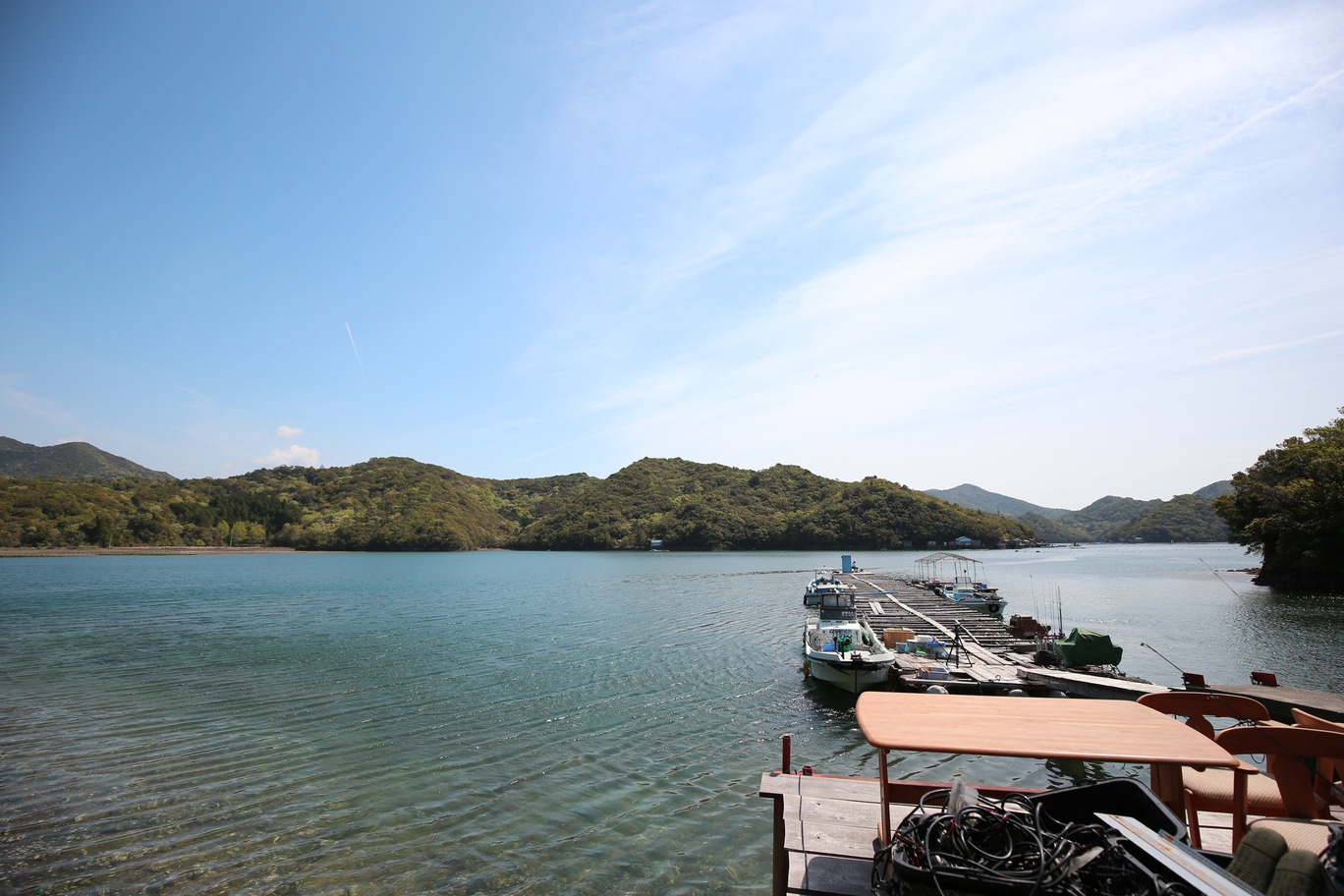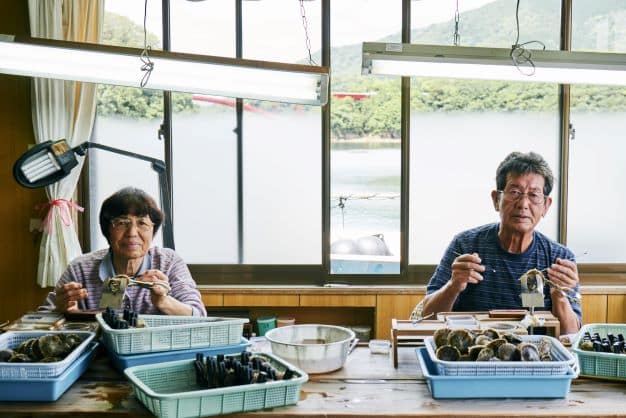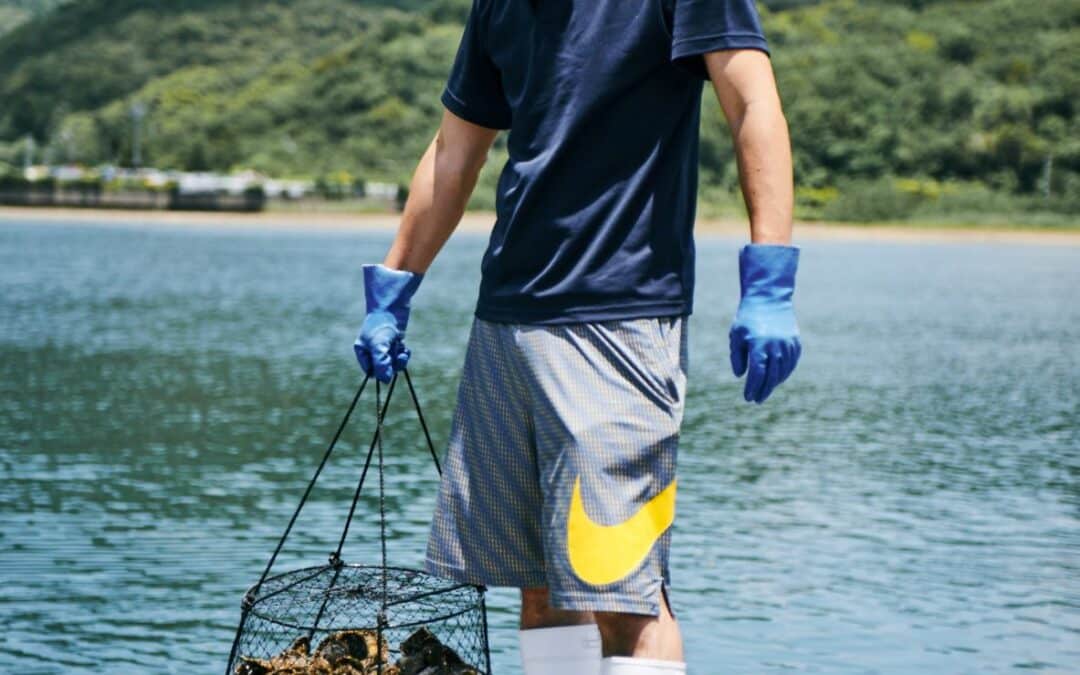Pearl FALCO. SingaLife Weekly. Maiko Makito’s Interview with a Pearl Farmer
We wish to thank SingaLife for featuring members of the community and team members in a series of six articles about “Jewelry Makers,” which we will be posting in the coming weeks. SingaLife’s original articles were published in Japanese, and the first of the six articles are translated into English here. First in the Series, Maiko’s “Interview with a Pearl Farmer.”
Ise Shima Japan Is a Place Like No Other
Thanks to Ise Shima’s unique ecology and dedicated efforts over the last 120 years, sustainable pearl cultivation continues to thrive here in Ise Shima, Japan, the birthplace of cultured pearls.
We begin with Mr. Takatsugu Nishiura (49 years old), a local pearl farmer. “It’s been over 30 years since I followed in my father’s footsteps right after graduating from high school,” says Takatsugu.
“In Minamiise, Japan in the southern part of Mie Prefecture, where I was born and raised, like much of Ise Shima, the mountainous terrain shrouds deep and slender ocean coves softened by gentle breezes. The rich soil here feeds vital nutrients into the coves allowing for the growth of phytoplankton which Akoya Pearl Mother Oysters rely on.
“I don’t believe there is any better place to cultivate pearls in Japan. It is here where we cultivate some of the most beautiful pearls in the world,” notes Takatsugu with a smile, honoring the pearl farming legacy he inherited from his father.
“My father farmed pearls until his passing at the age of 74. Not only were my father’s technical expertise and pearls of the highest order, but even from an early age, as much as I continue to strive to achieve his mastery at pearl cultivation, I am still unable to match my father’s capabilities,” noted Takatsugu, as the devoted son spoke of his father with heartfelt remembrance.

Pearl Farming Process Is Not Easy Task
The work of pearl farming continues throughout the year. By the time “beach raising (pearl harvesting)” begins in December, lower ocean temperatures have caused the mother oysters to form tighter, stronger and more finely textured layers of nacre on the harvested pearls’ surfaces.
“At the same time that we raise the beach, we are preparing to place nuclei in the next generation of mother oysters which will take place in the coming spring. After that, the rest of the year is spent keeping the mother oysters clear of seaweed, algae or barnacles.” Faced with tens of thousands of mother oysters to tend to, the lonely work continues.
During the rainy season and when typhoons approach, mother oysters are moved to a safe haven where the flow is calmer, until the busy harvesting days of winter and lower aquatic temperatures resume.
“Pearl farming is a difficult job. Frankly, I love pearl farming, maybe because I might just be crazy enough for this work,” joked Takatsugu. Mr Nishiura loves the sea and pearls and continues to cultivate pearls intent on becoming a Master Pearl Farmer like his father.
The Future of Sustainable Pearl Farming & Life on Earth Is in Mr Nishiura’s & Our Hands
Due to climate change and a decline of pearl farming expertise locally, annual pearl harvests in Ise Shima have been declining in recent years. What I personallly saw in Takatsugu that day are the traits that will be necessary for all of us to adopt to help keep the grand tradition of sustainable cultured pearl farming here in Ise Shima Japan and elsewhere alive and well for generations to come. We hope you will join us in helping to create a sustainable future for all of us!



